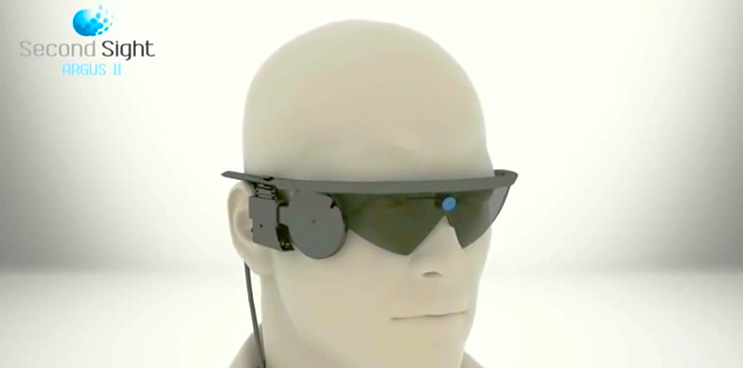Six months after the surgery, the first Spanish with a bionic eye has gone from the total darkness to discern shapes and distances thanks to the technology developed by Second Sight Medical Products. With the MedTech field moving forward so fast, a new generation of devices meant to restore the sense of vision is about to come.
Second Sight, located in California, was founded in 1998 by Alfred Mann, Dr. Sam Williams and Gunnar Bjorg with the goal of designing a retinal prosthesis to provide sight to subjects blinded from outer retinal degenerations, such as retinitis pigmentosa. They have created the Argus II Retinal Prosthesis System (“Argus II”), the world’s first approved device intended to give back some functional vision for people suffering from blindness. Argus II is approved for use in the United States and the European Economic Area. The implant consists in an epiretinal prosthesis surgically implanted in and on the eye that includes an antenna, an electronics case, and an electrode array. An external equipment is also needed, including glasses, a video processing unit (VPU) and a cable.
The american company has raised last November during its IPO around $31M. Their European competitors, Retina Implant AG and Pixium Vision, are in the rear. Pixium Vision, founded in France in 2011, has joined forces with GenSight Biologics (a clinical stage biopharmaceutical company pioneering the development of gene therapy based treatments for retinal degenerative diseases) and Foundation Voir et Entendre (a foundation for scientific cooperation). They announced that their collaborative research and development project, called SIGHT AGAIN, will receive a total of €18.5M funding over five years as part of the Investment for the Future, the French government initiative to reinforce long-term French competitiveness.
This hopeful projects adds up to another strategy to cure blindness as the followed by researchers in Institute de la Vision in Paris, focused in gene therapy. This approach allows the development of therapies for a broad range of ocular diseases. Revolutionizing the therapies for two genetic diseases, Leber congenital amaurosis and Stargardt disease, and in age-related macular degeneration, the scientists from the Institute are currently under way to evaluate the safety and tolerability of these treatments.





